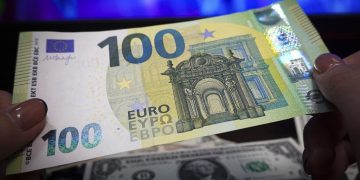As the world turned its eyes towards the golden hues of August, a tempest brewed within the global stock markets. This period of tumult, marked by significant fluctuations, saw the Japanese and American stock markets experiencing particularly sharp declines. On August 7th, Professor Gao Jieying from the School of Finance at the Capital University of Economics and Business, and the Director of the Beijing Zheshe CBD Development Research Base, shed light on the undercurrents that have roiled the financial seas.
The Butterfly Effect of BOJ’s Policy Shift
At the tail end of July, the Bank of Japan’s (BOJ) decision to raise interest rates and reduce its balance sheet sent ripples across the global financial landscape, reminiscent of the proverbial butterfly whose wings can trigger a tsunami halfway across the world. The potency of the BOJ’s monetary policy in shaking the international markets can be traced back to its long-standing zero and negative interest rate policies, which positioned the yen as a cost-free arbitrage resource in the global financial markets.
A Delicate Balance Upended
Professor Gao Jieying highlighted the widening interest rate differential between the United States and Japan, compounded by a strengthening dollar, which had previously facilitated stable arbitrage profits. The Federal Reserve’s inaction in July, coupled with Chair Jerome Powell’s hint at a possible rate cut in September, stoked fears about the sustainability of interest differential trades. Economists from institutions like Citigroup even anticipated a probable 50-basis point cut by the Fed in both September and November meetings. In stark contrast, the European Central Bank, the Bank of England, and the Bank of Canada had already slashed rates. The impending reduction by the Fed threatened to narrow the lucrative gap for USD/JPY arbitrage trades, as the dollar index faced increasing devaluation pressures.

The Yen’s Crucible
“The BOJ found itself at a crossroads, choosing currency stability over market pressures amid rapid yen depreciation,” stated Gao. The yen’s slide from 120 to 140, and the threat of further devaluation to 160, risked a significant blow to its credit and its standing as a global safe-haven currency. A weakened yen had been stifling consumer spending in Japan, while the benefits from increased exports were relatively limited due to the currency’s devaluation.
Financial institutions engaging in interest differential arbitrage included both Japanese and international entities. Japanese firms primarily targeted U.S. Treasury bonds, while international players diversified into stock markets, high-risk junk bonds, and other derivative markets. The stability of the yen, bought at the cost of falling stock prices, favored large Japanese financial institutions involved in arbitrage. However, for financial institutions and individual investors who had channeled their funds into global stock or derivative markets, the repercussions were severe.
The Unwinding of Leverage
The unwinding of leveraged positions and a return to the yen resulted in a significant appreciation of the currency. On July 31st, the yen broke through the 150 mark and continued to appreciate over the following days, reaching a peak of 141.69 on August 5th. This rapid appreciation could trigger margin calls or forced closures of arbitrage positions, potentially leading to a stampede-like collapse. Consequently, on August 6th, the BOJ announced that it would refrain from raising rates amidst market instability, which provided temporary relief to the financial markets. The dollar-yen exchange rate quickly rebounded to 146, and stock indices in Japan and the U.S. saw a recovery.
Divergent Views on the Unwinding Process
There remains a disparity among international financial institutions regarding the extent to which the arbitrage positions have been unwound. While Goldman Sachs and Société Générale believe that the short yen positions have largely been covered, JPMorgan Chase, UBS, and Scotiabank estimate that only 50%-60% of the unwinding process is complete.
The Broader Financial Narrative
Professor Gao Jieying contends that the shockwaves sent through global financial markets by the BOJ’s rate hike are a manifestation of changes in marginal liquidity and the detachment of financial markets from the real economy, which has been underperforming expectations. The BOJ’s shift away from negative interest rates in March towards normalization, and Japan’s inclusion on the U.S. Treasury’s currency manipulator watchlist in June, indicate a desire to attract capital inflows and promote domestic economic development while maintaining yen stability. The timing and pace of Japan’s rate hike were predominantly based on domestic considerations. However, the impact on the U.S. stock market far exceeded the expectations of the BOJ and international financial institutions. The overreaction in the U.S. stock market was not only linked to the BOJ’s rate hike but also closely connected to the “recession trade” triggered by non-farm payroll data falling short of expectations.

































